The Pace RC295 then. Full carbon. 135mm rear travel dual linkage. 140-150mm fork. Full 29in or mullet thang with an offset shock bushing.
- Price: £5,859
- From: pacecycles.com
- Tested by: Benji, Amanda and Ross
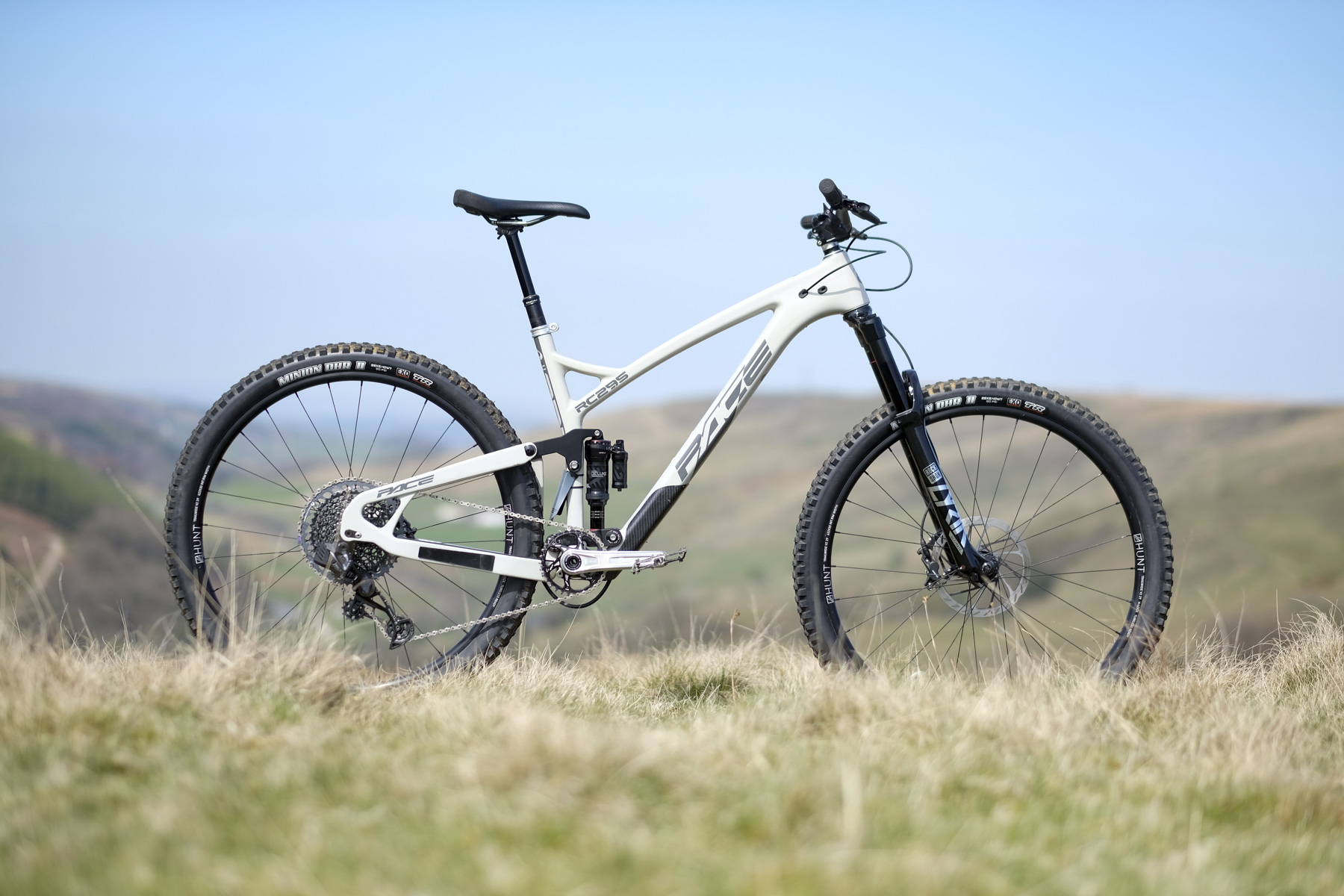
Pace is a very storied name in British mountain biking, and it is one of the original Brit Bike Brands that is still going. Although the brand started in the ’80s, Pace is perhaps best remembered for its ’90s and ’00s suspension forks. However, Pace most definitely has a pedigree in bike frame design too. Not just hardtails either. Pace was right in there with a full suspension design from the get-go. If you were to Google “Pace RC500” you’d see plenty of purple bike porn images of Pace’s iconic downhill race bike from the early ’90s, complete with its massive reach and wheelbase, paired to the dinkiest bespoke stem ever seen at the time.
Around the millennium, Pace ceased making bike frames for a while. But they couldn’t help themselves and in 2009 they came back to full bouncer bikes with the fully floating virtual pivot pointing RC405. Sometime in the ’00s Pace sold some of their fork design features to DT Swiss and ceased making forks (apart from rigid carbon ones for a bit anyway).
What does Pace do in 2022AD? Hardtail frames, full suspension frames and a really rather excellent stem. We got hold of a complete build of its trail bike: the Pace RC295.
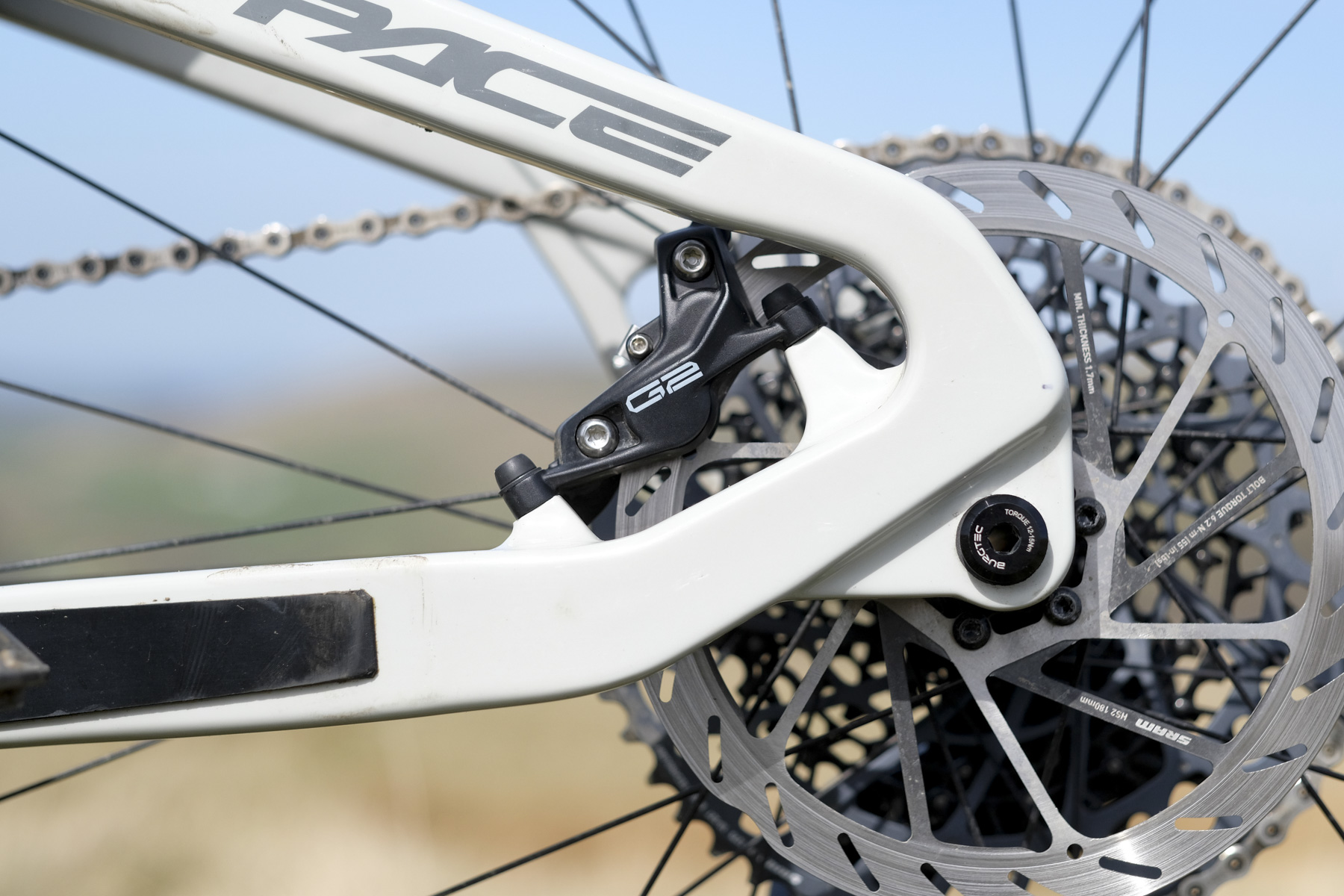
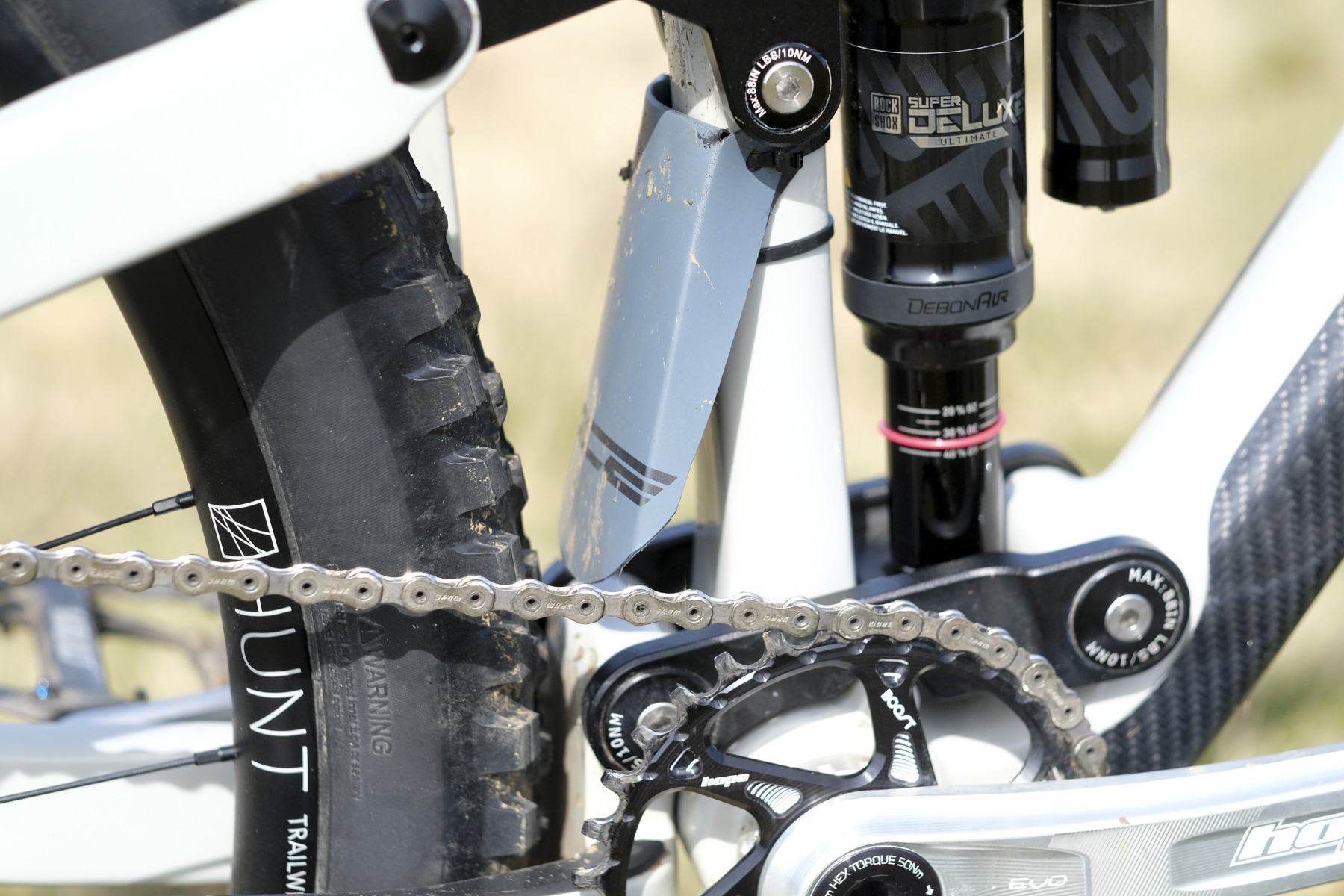

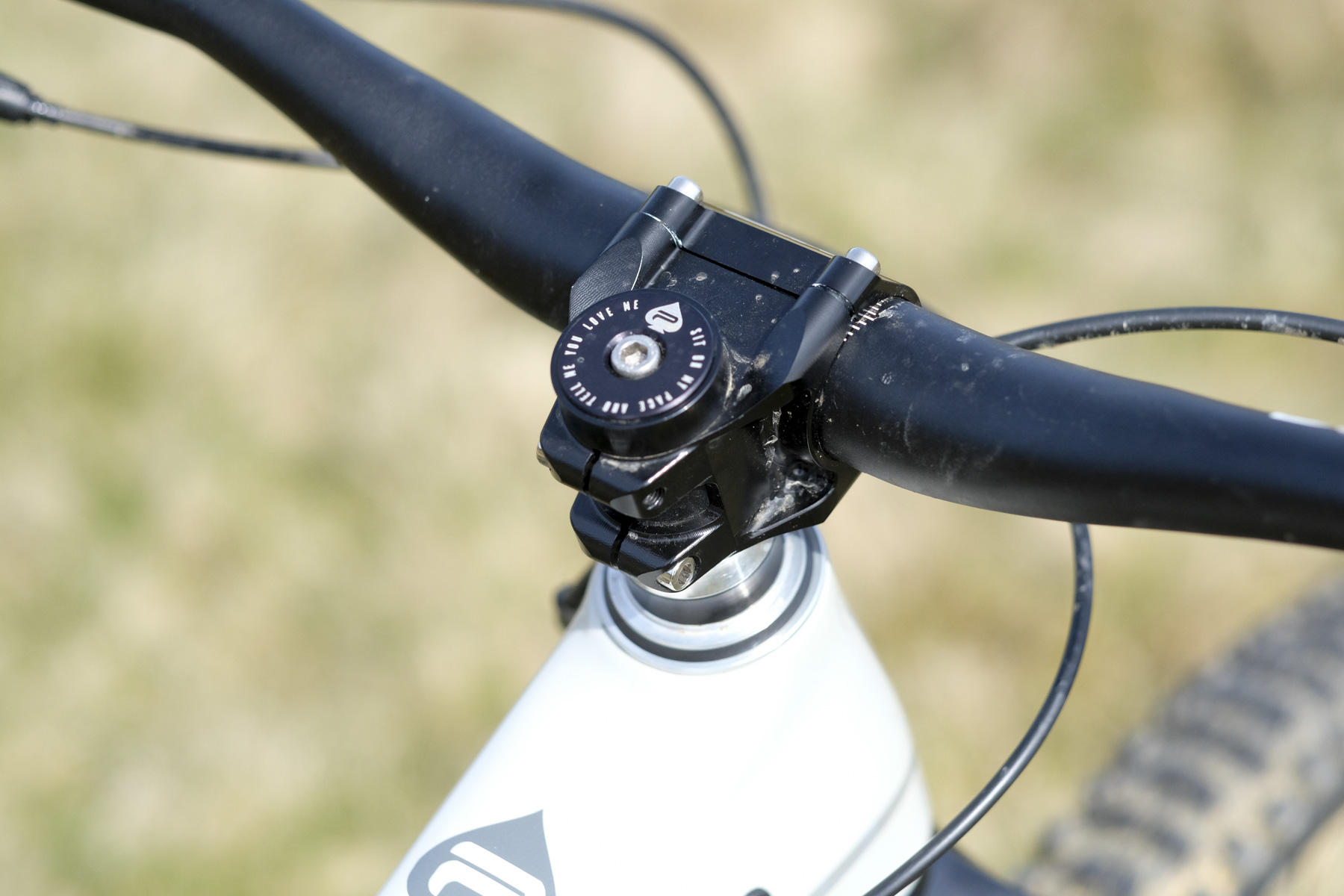
The Bike
This is not a new bike, in the mid-Atlantic model-year-driven world of cycling at least. Indeed, this bike is at least four years old now. We know, shocking. How can it possibly still be allowed to exist in its current form? Well, because it was a typically British ahead-of-the-curve design when it first slipped out from under its covers back in 2018. It was finally a purchasable reality in 2020. There have been some component changes since then, but ultimately it’s the same chassis.
For newer riders only used to seeing steel hardtails with Pace decals on them, it may have been startling to see the use of carbon fibre on a Pace product. Old gits like me know that carbon and Pace go back. Way back to the square-tubed alloy hardtails with carbon seat tube sections. Or even wayer back to the carbon wrap lowers of their iconic ’90s suspension forks. Pace has arguably been wanting to make a carbon fibre full suspension bike since its very first years as a brand.
It also comes as no surprise to see a fully floating suspension design being used. Pace has a history of such systems (see the Pace RC405 and RC204 from around 2010). Fully floating means the rear shock is not mounted directly to a fixed position in the front triangle anywhere: it’s mounted to the rocker at the top and the chainstay at the bottom. Think of a finger and thumb squeezing a jelly bean.
Why go fully floating? In theory it opens up the potential for greater leverage curve tweaking. More significant in my opinion, is that it further removes some side-loading stresses from the rear shock. This can only help in extending rear shock life as well as improving the free movement of the suspension action on cambered terrain.
The RC295 is made of Toray UD carbon fibre and uses a latex mould system to help attain smoothness inside the frame tubes. You can’t see it, but it’s there and it should make the bike stronger as well as a bit lighter than if fabricated by other methods. The rocker linkage is CNCed 7000 aluminium. So too are the alloy covers that protect the Enduro Max bearings on the pivot points. The bearings are warrantied for five years by the way. That’s reassuring and just plain nice. The cabling is internally routed and is covered by a bespoke Rockguardz protector as it passes under the bottom bracket shell. There’s also an odd zip-tied-on mudguard on the seat tube. It looks a bit rubbish. It buzzed occasionally on the back tyre after it had moved slightly on rough rides. It’s not really needed.
The geometry is perhaps showing its age ever so slightly, but only in the sense that it’s no longer ‘progressive’– it’s merely ‘modern’. The 64.5° head angle, 76° seat angle and 484mm reach (Large) are pretty standard now. The lengthy 457mm seat tube is starting to look a bit on the high side compared to rival trail bikes. There is an offset bushing in the shock mount for altering the geometry slightly and/or running a 27.5in rear wheel.
The build kit you can inspect for yourself below. Suffice to say that it’s all perfectly good. We especially love Pace’s own rinky-dink 32mm stem and the speccing of short 165mm cranks. The latter is a real indicator of a bike designed and specced by UK trail riders. Climbing clearance and cornering radness? Yes please. The bike is deserving of better brakes, however, so we’d probably trade in the AXS zip-zap wireless drivetrain to pay for improved stopping power and control. Because, without wishing to be too much of a spoiler, this bike is ace and it was only really the brakes that held it back now and then.


The Ride
Much as we’re loath to do the usual review cliché of starting with a bike’s climbing performance, we are going to do exactly that here. Mainly because it is one of the bike’s defining characteristics. Or rather, its stability under pedalling is. Contrary to what some reviewers seem to think/write, a mountain bike gets pedalled all the time. Yes, even downhill. Pedalling does not just happen on fire road climbs. The back end on the Pace RC295 doesn’t ever seem to squat noticeably under pedal load. We’re not going to go OTT and claim that it doesn’t move at all and ‘sprints like a hardtail’ and all that guff. Because it doesn’t. It moves a tiny amount. We only know this by staring really hard at the shock during climbs. Yet it similarly doesn’t struggle for traction. It’s not a rigid spitter. It feels sort of like running really sticky tyres, but without the attendant drag. It feels great.
Away from climbs and on to the traverses and descents then. Did the Pace RC295 feel a bit harsh or wooden? No, not at all. Far from it in fact. The bike is very eager to give up its travel. It’s very active in terms of responding to lumps and bumps from below. We would comment that we think the suspension is very much designed with volume spacer tweaking in mind. Heavier riders, or any riders who ride gnarly velocities, may find that the rear end is a bit too linear. We wouldn’t run a coil shock on this bike. Well, unless it was a coil shock with a big ol’ bottom out bumper to dissipate massive hits and harsh landings. But for the majority of riders, the majority of the time, the swallowy nature of the suspension in terms of terrain soaking is really nice. As well as making it extremely comfy for all day epics, it makes the bike just plain flipping fast on mild-to-middling terrain. It’s a very realistic mountain bike.
Without wishing in any way to patronise it, or damn it with faint praise, the Pace RC295 is absolutely squarely aimed at… trail riding. Not winching and plummeting. Not Strava-racing cross-country. Not shredding hot laps. Or whatever the latest thang is. The bike is extremely nicely balanced. The bike is rangey in the middle, and the head angle and the chainstay length combine nicely to offer up a ride that appeals to seasoned bike hustlers.
We’ve tried hard (well, a bit) not to mention Mr Pace in this review – because even small bike brands are more than one person – but Pace boss Adrian Carter’s fingerprints are all over this bike. We’ve ridden a few times with him and he is basically the Bruce Lee of British biking. He doesn’t appear to be trying very hard at all. Nor is he overly hard on his bike and components. He is fast as feck. He is a wholly effortless rider. And that’s what this bike feels like.
It’s not that it’s effortless per se. It’s more that it is without struggle. In its stock set-up the RC295 is definitely a bike that prefers an experienced trail rider on board. It’s not an enduro wannabe that’s (over)built for what it will actually be requested to do. It’s also a sinuous beast. There is a nice amount of chassis flex to the bike. As well as really helping with finding traction, this ‘give’ also stops the bike being slowed down or knocked off line whilst riding. Shall we call it something tragic like ‘3D compliance’? Or shall we just say it’s a job well done by Pace? Yeah. Well done Pace.
Niggles? We wouldn’t say no to a slightly steeper seat angle. And better brakes. It’s annoying to be cautiously dragging the brakes on a bike that longs to be set free to flow.
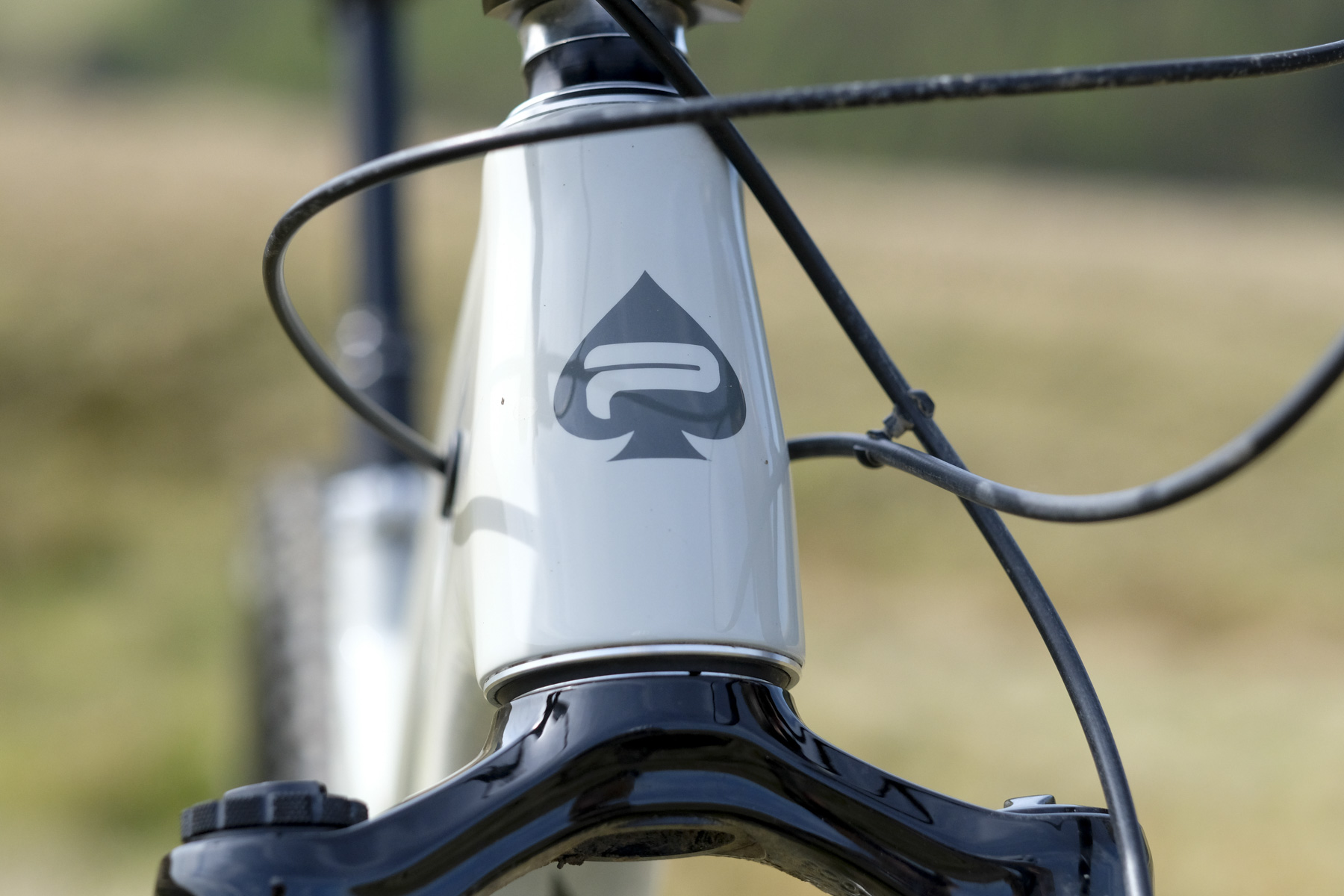
Overall
We freaking love it when a bike defies expectations. Especially when it takes those same expectations and wees in their condescending little shoes. The Pace RC295 has no right being as great as it is.
Some people may like the look of the RC295. Some are not massive fans. Loads of people will look at the geometry chart – and hear the comments about the suspension’s linearity – and instantly turn off. It’s their loss. This is a bike that is in no way fashionable. It’s not a punchy down-country bike. It’s not a progressive diet-enduro bike that may as well just be a proper enduro bike. It is absolutely a trail bike. It’s not a bike we’d say that you could tweak into either a marathon machine, nor bulk-up into an enduro bike. It is not for racing. It’s for riding. It is very probably into the very same sort of weekend play as you are.
Pace RC295 AXS Ultimate Specification
- Frame // Carbon Fibre, 135mm
- Shock // RockShox Super Deluxe Ultimate RCT, 210x55mm
- Fork // RockShox Lyrik Ultimate RC2 Charger 2.1, 150mm, 42mm offset
- Wheels // Hunt Trail Wide
- Front Tyre // Maxxis Minion DHR II, 29×2.4
- Rear Tyre // Maxxis Minion DHR II, 29X2.4
- Chainset // Hope CNC Spiderless, 165mm, 32T
- Drivetrain // SRAM AXS GX Eagle
- Brakes // SRAM G2 RS, 203/180mm
- Stem // Pace RC46 35mm, 32mm
- Bars // Burgtec Ridewide Alloy Enduro, 800mm/30mm rise
- Grips // Burgtec Bartender
- Seatpost // Bike Yoke Dropper Revive
- Saddle // Burgtec Cloud Chromo
- BB // Hope
- Size Tested // L
- Sizes Available // M, L, XL
- Weight // 13.7kg
Geometry For Our Size L Test Bike
- Head angle // 64.5°
- Effective seat angle // 76°
- Seat tube length // 457mm
- Head tube length // 110mm
- Chainstay // 436mm
- Wheelbase // 1,241mm
- Effective top tube // 635mm
- BB height // 46mm BB drop
- Reach // 484mm
Story tags

Previous article
Next article
Review Info
| Brand: | Pace |
| Product: | RC295 |
| From: | Pace Cycles |
| Price: | £5,859 |
| Tested: | by Benji for 2 months |



You must be logged in to reply to this topic.